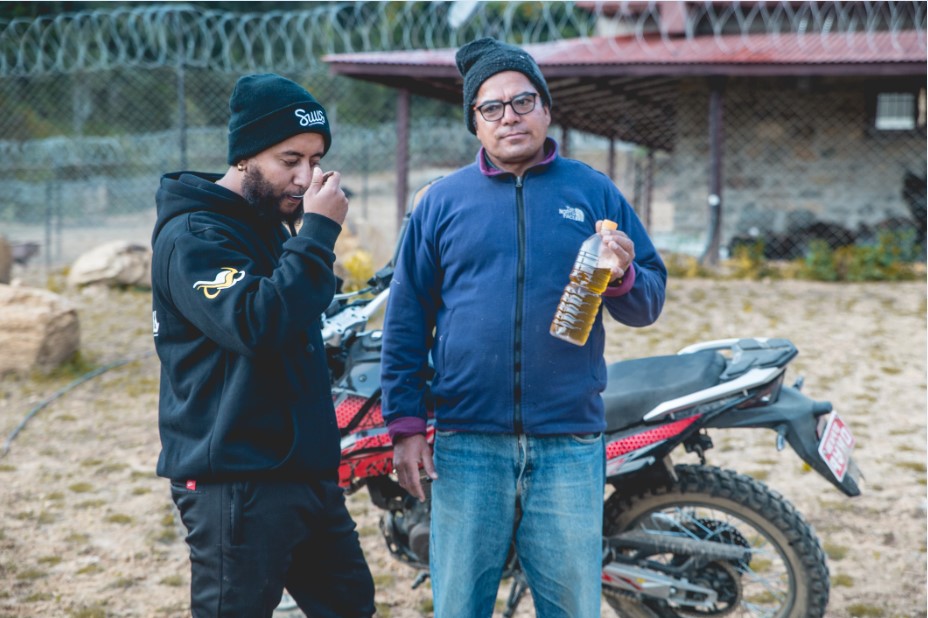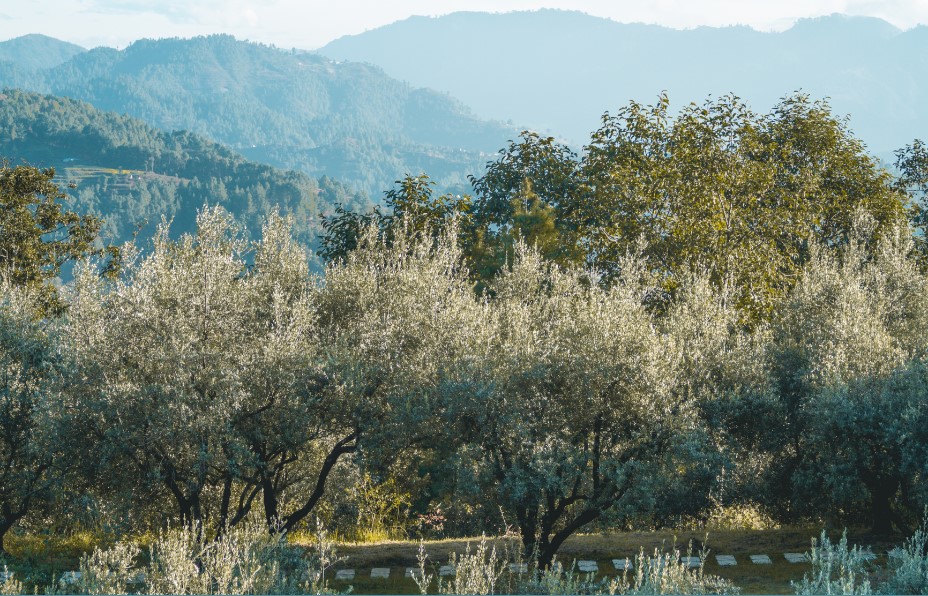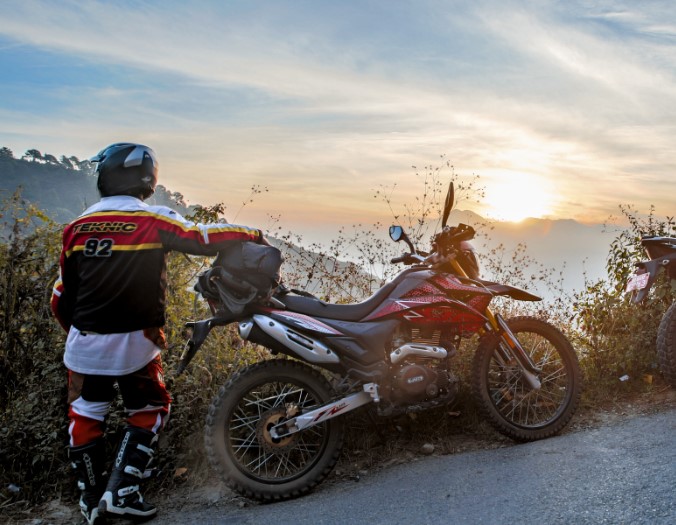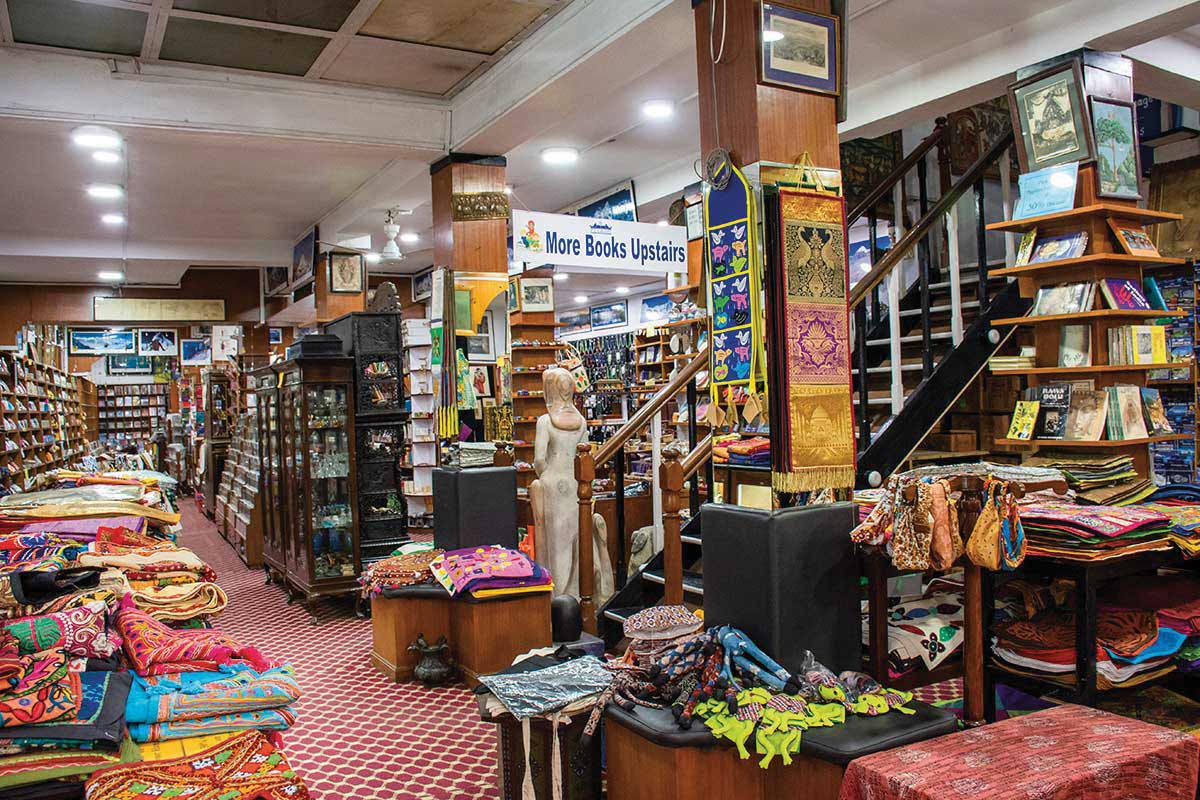
“We plan to source local things, whatever exists here—like, who would have thought there’s 2,000 olive trees growing in Nepal, and they’re planting more. Someone’s doing goat cheese, there are even alpacas over there, though not for eating, of course...” so began my conversation with Ateet Shrestha.
Sometime last year, I’d wandered into Genesis because I was curious, because I like to check out new places when I see an unfamiliar sign on the road, or read about somewhere new in the paper. At first, I’ll be honest; I thought it looked like a slightly gimmicky concept café, what with the bikes everywhere; but I had something to eat, and it was good. Surprisingly so. Then, more recently I saw some of their online videos about the trips that they’ve been making, and I was both surprised and impressed, because it’s not common in Nepal to source local ingredients from all over the country in this way, to really care about where each item comes from. Or at least not as common as it should be. It’s big in other parts of the world—Italy and France, for instance, where the provenance of ingredients used is a major part of what you cook and how. Terroir is what they call it, a word which derives from the French word for land. It’s hard to define exactly, but it’s basically the concept that the environment, soil, water, everything, of a particular area forms the character and unique taste of a crop, plant, or the product made from it..
 So I came to ask, what inspired them? Ateet Shrestha is the chef and co-owner of Genesis, which he opened with his partner Saujan Man Pradhan in August 2016, and he took some time to explain their vision and answer my questions.
So I came to ask, what inspired them? Ateet Shrestha is the chef and co-owner of Genesis, which he opened with his partner Saujan Man Pradhan in August 2016, and he took some time to explain their vision and answer my questions.
“I’m a chef by profession, so I think that explains everything. And, I’m a passionate motorcyclist, so what I’m doing is simply putting passion and profession together. Nepal has good terrain, Nepal is a beautiful place, we can travel around and I can find the local sources, and come back and put it on the plate. Nepal is so rich in food, as well, but it hasn’t been up there because there’s no one, you know?”
Yes, in fact I do know, because we have been trying to encourage new things with food, but there’s often very little ‘new’ stuff to be found.
On their first trip, Ateet and his friends drove to Mustang and traveled to Lete, Marpha, and Jomsom, tasting food, meeting locals, and observing how things were done. “For the first two days, no one was keen to tell us their secrets…what happened was, I met a 70-year-old lady, an auntie of my friend, a very active person locally. I told her, I’m a chef, I have a restaurant—I’m not here to steal your things, but to promote what you guys do—what’s the history of the food, the history of Thakali. So she showed me her kitchen and explained things.”
Ateet points out that there is so much variety in what is called ‘thakali,’ even within the area it’s originated from. “So, in Lete, when you go and eat Thakali, it’s different; you go to Marpha, it’s completely different, yet they all call it Thakali. And there are so many Thakali clans.”

After returning, he didn’t feel that replicating it exactly would be appealing to the Kathmandu palate, even if he knew which of the many varieties to chose to copy. “So I made a thali—highly influenced from them, but I don’t call it a Thakali, I call it a thali.” Going back to the roots of where it comes from has enhanced his cooking skills and the final product, even though he in no way claims it to be ‘the’ authentic version.
The second trip was to Chitlang, to visit a goat cheese maker and large olive farm there, which harvests 17 tons of olives a year. Sadly, that oil is not available locally, it’s all exported. Ateet is hoping to get a small amount of olives from the next harvest, though, so he can experiment with curing them and perhaps incorporating them into the restaurant’s menu eventually. It’s surprisingly close, only 17 km from Thankot, and I learn that the name of the place, Chitlang, comes from the Indian emperor, Ashok, who made a chaitya there, and that’s how it got its name; from chaitya it became Chitlang. Apparently, it’s a little visited but beautiful historical site that the biker-cooks made a detour to. At the goat cheese farm—the cheese which is used in the kitchen at Genesis—the owner, Ashok, makes both fresh and semi-hard goat’s cheese, using techniques he studied while visiting France. Apparently, he also makes a peach ‘wine’ which he learned about in Belgium. The making of so many of these products is a learning process, with some of them having farther to go than others, but it’s certainly encouraging that more and more of these types of food items are being made right here in Nepal
“Do you find that sourcing your own ingredients changes the way you cook?” I asked.
“It helps me, actually. It helps me find the things that exist over here.”
“Do you find things and then build your food around them, or do you go looking for ingredients to go with the food you make?” is my next question.
“It depends. Number one: Thakali; it already exists, so I come back after the learning trip and do it, my way. Number two: goat cheese; I go, find the goat cheese, come back, and put it on the plate in my own way or interpretation, but there is no “authentic” Nepali dish made out of goat cheese, so I use it in salads or frittata. The plan is to spend a couple of years doing the research on these ingredients, keep practicing different foods, Nepali specials, different techniques, and mix the authentic cuisine and [other] ways of cooking food. Say in five years’ time I can bring in some friends I used to work with in Australia”—this is where Ateet trained to be a chef— “plus the team I’ve trained here, and make a modern Nepali restaurant which can be a revolution.”
It’s both inspirational and encouraging to hear such a long-term, well thought out plan, and it bodes well for Nepal’s up-and-coming food scene that people are thinking this way.
“That’s why I came back,” Ateet continues. “Like you said, it’s not common in Nepal. But if I was going to do something common, why bother, I can do it in Australia; there’s a high demand for chefs, I can work anywhere. I wanted to try something different, use the skills that I’ve learned, that attitude of learning all the time, and most importantly, I can ride all the time, just say, okay ‘I’m going to look for food’ and I can ride.”
His next plan is to ride up to Solu, where a friend has a small dairy farm. He’s really excited about the trip. He’s asked the farmer friend if he’ll be willing to try to make some Parmesan for the restaurant, which will require an aging time of three years. Now, that’s really thinking ahead!
Over my visits to Genesis, I’ve eaten several dishes—coincidentally, as you will see when I list them, they all involve pork. Ateet assures me the menu is not intentionally pork based. In fact, while some dishes are regulars, others change with the seasons and available ingredients, so if you visit, make sure you ask about the current specials. I had the roast pork sandwich, which was tasty and satisfying, a great difference from the usual sandwich choices, and on another occasion, the gnocchi in wild boar ragu. It’s the first time I’ve had gnocchi in Nepal, and they were so well made—not easy to do, I assure you—and delicious to eat. But, my favorite dish of all is also the dish that’s remained on the fixed menu, because the restaurant patrons love it so much too: pork belly with juniper-infused jus. The meat is pull-apart soft, the crackling on top is crispy, the sauce is oh-so-good, and it’s all served on a bed of mash with a small pile of pickled purple cabbage on the side. Of course, the pork belly is the star of the show, but I’m blown away by how good the little things on the side are, too, like the jus and that cabbage which I could eat a whole bowlful of. Just so good.
“In the future, in general, I’d like to source as many local ingredients and cooking techniques as possible, and then come up a thing called ‘modern Nepalese’—take the cooking scene to the next level.
Maybe this [new businesses opening here] can stop some Nepalis leaving the country, and this is what I want to do. At the end of the day, it’s a business; you have to sustain, as well, and make your customers happy.”
If Genesis keeps coming up with things like that delicious pork belly dish, I think that revolutionizing Nepali cooking and making their customers happy are both goals they are well on their way to reaching already.










